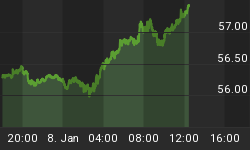In another move by the Chinese authorities to rein in its booming economy, China's central bank yesterday announced the third increase this year in the amount banks must hold as reserves. These measures, together with large stock issuance, have been weighing heavily on the Chinese stock market over the past few months.
Together with Hong Kong, Lisbon and Spain, the Shanghai Composite Index (SSEC) (2,868 at the time of writing) is one of the few major bourses trading below both its 50-day (3,051) and 200-day moving average (3,093), and also below its February low. The Index is now trading 13% below its January high and 53% down from its October 2007 bull market peak. By comparison, the S&P 500 Index is now 3% above its January high and "only" 22% below its 2007 high, indicating massive underperformance by Chinese equities (see declining relative strength line in the bottom section of the chart below).

Source: StockCharts.com
The SSEC Index appears oversold on the basis of short-term indicators, but a worrying picture emerges from longer-term, monthly data. Not only has the Index broken below its key 10-month (200-day) moving average, but the momentum oscillator (ROC) in the bottom section is on the verge of crossing below the zero line which will indicate a primary bear signal.

Source: StockCharts.com
The Chinese stock market was the first to turn the corner after the credit crisis sell-off - a full five months before the majority of indices bottomed in March 2009 - and is being watched closely to ascertain whether this market would be the first to spell danger for global stocks, i.e. the proverbial canary in the coalmine. Until clearer evidence emerges, the cyclical bull market remains intact but barely so, and I will monitor this situation very closely for a possible leash effect regarding global stock markets.
Did you enjoy this post? If so, click here to subscribe to updates to Investment Postcards from Cape Town by e-mail.
















